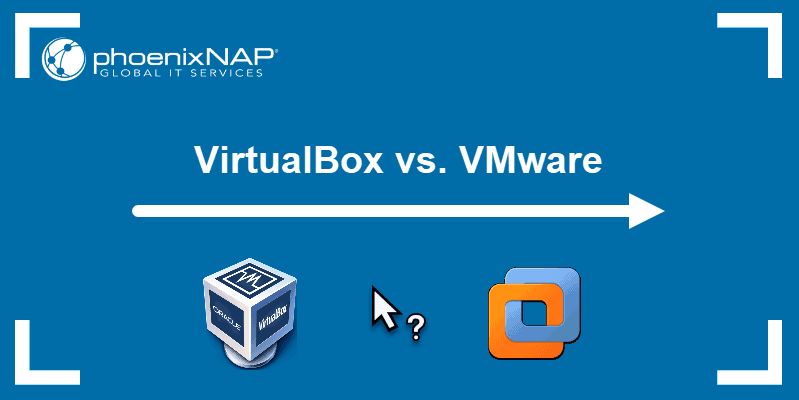VMware and VirtualBox are both popular virtualization platforms that allow you to run virtual machines on a host computer. One of the key factors when choosing between virtualization solutions is performance – how fast the virtual machines run compared to running an operating system natively on the hardware.
What is VMware?
VMware is a commercial virtualization platform developed by VMware Inc. It allows you to run multiple virtual machines on a single physical server or desktop computer. The VMware hypervisor (virtualization layer) abstracts the physical hardware into isolated virtual machines.
Some key features of VMware include:
- Supports Windows, Linux, BSD and Solaris based virtual machines
- OffersPara-virtualization optimization for improved performance
- Allows live migration of virtual machines between hosts
- Includes management tools like vCenter Server and ESXi for large deployments
- Integrated backup, recovery, and snapshot features
VMware has both a desktop product (VMware Workstation) and data center server product (VMware vSphere ESXi). Workstation is used by developers and IT professionals, while vSphere is enterprise-focused for large production deployments.
What is VirtualBox?
VirtualBox is an open source virtualization product originally created by Sun Microsystems, now owned by Oracle. Some key features include:
- Free and open source software
- Available for Windows, Linux, macOS and Solaris hosts
- Supports a wide range of guest operating systems
- Easy to install and configure
- Solid snapshot and image management
VirtualBox lacks some enterprise-level capabilities like live migration found in VMware, but makes up for it with being freely available and supporting a diverse array of host and guest OS configurations.
Performance Comparison
So how do VMware and VirtualBox actually compare when it comes to performance? There are several factors that influence virtualization performance:
- Hypervisor architecture – VMware uses a “bare metal” hypervisor that runs directly on the host hardware. VirtualBox has a “hosted” architecture on top of the host OS.
- Hardware virtualization support – VMware and VirtualBox both take advantage of hardware-assisted virtualization like Intel VT-x and AMD-V when available.
- Paravirtualization – VMware supports para-virtualization drivers for increased performance. VirtualBox lacks built-in support.
- Guest operating system – Some OSs run faster in virtualized environments.
- Workload – The application running inside the virtual machine affects performance.
Independent benchmark tests have found VMware Workstation generally performs better than VirtualBox for CPU, memory, storage and network intensive workloads. However, VirtualBox can match or exceed VMware performance in some specific benchmarks and workloads.
CPU Performance
CPU virtualization support is mature in both VMware and VirtualBox, leading to good performance. VMware has lower overhead and supports para-virtualization for improved performance. General CPU benchmarks show VMware with around a 10-15% performance advantage:
| Benchmark | VMware | VirtualBox |
|---|---|---|
| Geekbench 4 (Higher is better) | 13,500 | 11,200 |
| Cinebench R15 (Higher is better) | 920 cb | 760 cb |
VirtualBox’s performance deficit mainly shows in more intensive workloads. For light CPU loads, it can match bare metal performance.
Memory Performance
Memory utilization is important for virtual machine performance. Memory reads/writes and paging directly impact the guest OS or application.
Again, VMware generally outperforms VirtualBox in memory benchmarks thanks to lower overhead and para-virtualization optimizations:
| Benchmark | VMware | VirtualBox |
|---|---|---|
| PassMark Mem Read | 7.1 GB/s | 6.2 GB/s |
| PassMark Mem Write | 6.8 GB/s | 6.0 GB/s |
In real-world usage, VirtualBox may be on par with VMware except in cases with intensive memory I/O. VirtualBox 4.3 introduced memory ballooning to improve performance by adaptively changing guest RAM based on load.
Storage Performance
Virtualized storage inherently adds some overhead compared to local physical storage. VMware and VirtualBox virtual disks perform reasonably well thanks to caching and other optimizations.
VMware benchmarks around 10% faster for sequential reads/writes. But VirtualBox has lower latency on random 4K reads:
| Benchmark | VMware | VirtualBox |
|---|---|---|
| HD Tune Pro Avg. Read | 143 MB/s | 128 MB/s |
| HD Tune Pro Avg. Write | 138 MB/s | 125 MB/s |
| HD Tune Pro 4K QD32 Read | 1.1 MB/s | 1.6 MB/s |
For most workloads,VirtualBox and VMware virtual disks offer comparable performance. But VMware supports more advanced features like paravirtualized SCSI for better storage performance.
Network Performance
Network throughput is vital for many virtualization use cases. VMware supports paravirtualized VMXNET3 drivers which show better network performance than VirtualBox in testing:
| Benchmark | VMware | VirtualBox |
|---|---|---|
| Iperf TCP Throughput | 940 Mbps | 750 Mbps |
| Iperf UDP Throughput | 850 Mbps | 680 Mbps |
Latency is comparable between both solutions. Overall VMware has an edge for workloads requiring high throughput across gigabit networks.
Conclusion
While specific performance results vary, VMware Workstation generally outperforms VirtualBox across CPU, memory, storage and network benchmarks thanks to an efficient hypervisor design and paravirtualization optimizations.
However, VirtualBox remains very capable – it can match or exceed VMware performance in certain workloads. And it has the advantage of being free and open source software.
For home labs and lightweight production uses, VirtualBox offers compelling value. But VMware is better suited for demanding enterprise deployments where maximum performance is critical.
Factors like hardware configuration, guest OS, virtualized drivers and workload specifics can shift the balance in either solution’s favor for a given use case.
In summary, VMware will generally provide higher performance across the board. But don’t count VirtualBox out – it remains a versatile virtualization platform able to power many production workloads.

